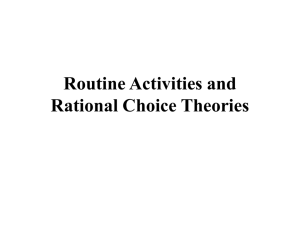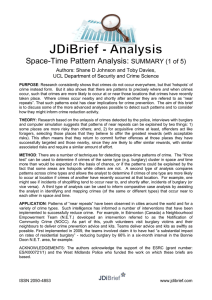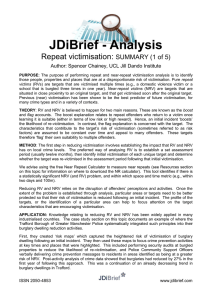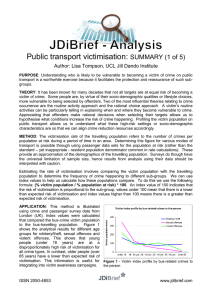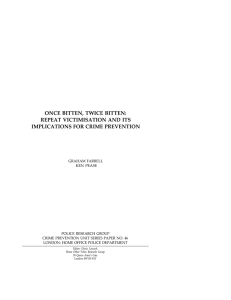Space-Time Pattern Analysis: PURPOSE & THEORY (2 of 5)
advertisement
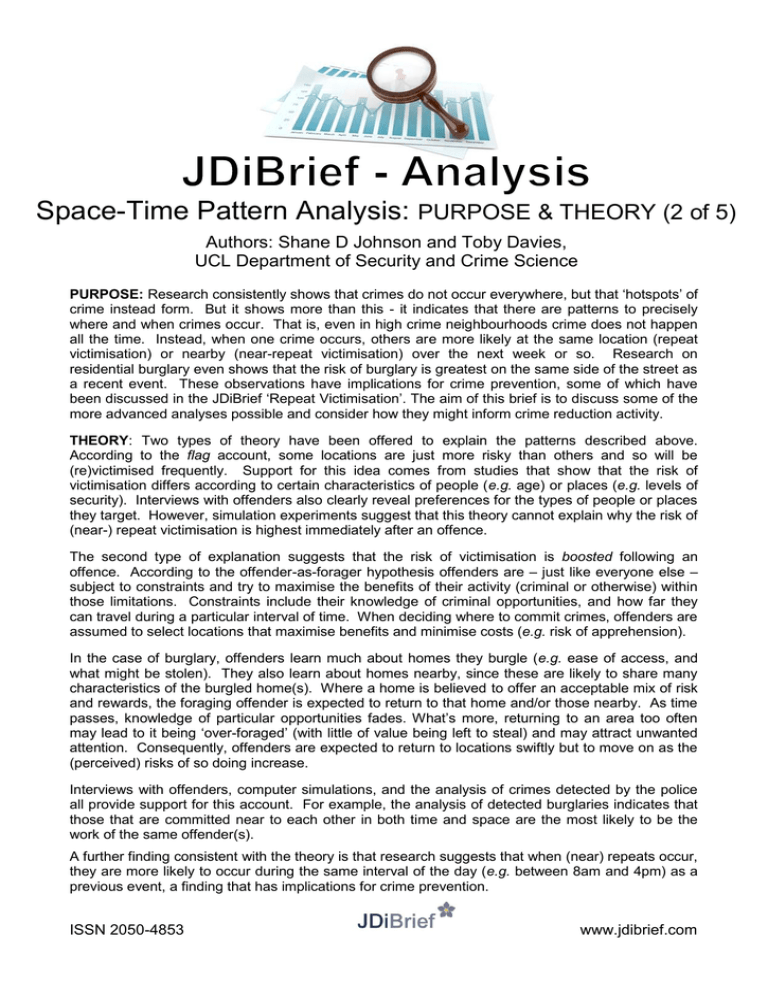
Space-Time Pattern Analysis: PURPOSE & THEORY (2 of 5) Authors: Shane D Johnson and Toby Davies, UCL Department of Security and Crime Science PURPOSE: Research consistently shows that crimes do not occur everywhere, but that ‘hotspots’ of crime instead form. But it shows more than this - it indicates that there are patterns to precisely where and when crimes occur. That is, even in high crime neighbourhoods crime does not happen all the time. Instead, when one crime occurs, others are more likely at the same location (repeat victimisation) or nearby (near-repeat victimisation) over the next week or so. Research on residential burglary even shows that the risk of burglary is greatest on the same side of the street as a recent event. These observations have implications for crime prevention, some of which have been discussed in the JDiBrief ‘Repeat Victimisation’. The aim of this brief is to discuss some of the more advanced analyses possible and consider how they might inform crime reduction activity. THEORY: Two types of theory have been offered to explain the patterns described above. According to the flag account, some locations are just more risky than others and so will be (re)victimised frequently. Support for this idea comes from studies that show that the risk of victimisation differs according to certain characteristics of people (e.g. age) or places (e.g. levels of security). Interviews with offenders also clearly reveal preferences for the types of people or places they target. However, simulation experiments suggest that this theory cannot explain why the risk of (near-) repeat victimisation is highest immediately after an offence. The second type of explanation suggests that the risk of victimisation is boosted following an offence. According to the offender-as-forager hypothesis offenders are – just like everyone else – subject to constraints and try to maximise the benefits of their activity (criminal or otherwise) within those limitations. Constraints include their knowledge of criminal opportunities, and how far they can travel during a particular interval of time. When deciding where to commit crimes, offenders are assumed to select locations that maximise benefits and minimise costs (e.g. risk of apprehension). In the case of burglary, offenders learn much about homes they burgle (e.g. ease of access, and what might be stolen). They also learn about homes nearby, since these are likely to share many characteristics of the burgled home(s). Where a home is believed to offer an acceptable mix of risk and rewards, the foraging offender is expected to return to that home and/or those nearby. As time passes, knowledge of particular opportunities fades. What’s more, returning to an area too often may lead to it being ‘over-foraged’ (with little of value being left to steal) and may attract unwanted attention. Consequently, offenders are expected to return to locations swiftly but to move on as the (perceived) risks of so doing increase. Interviews with offenders, computer simulations, and the analysis of crimes detected by the police all provide support for this account. For example, the analysis of detected burglaries indicates that those that are committed near to each other in both time and space are the most likely to be the work of the same offender(s). A further finding consistent with the theory is that research suggests that when (near) repeats occur, they are more likely to occur during the same interval of the day (e.g. between 8am and 4pm) as a previous event, a finding that has implications for crime prevention. ISSN 2050-4853 www.jdibrief.com





